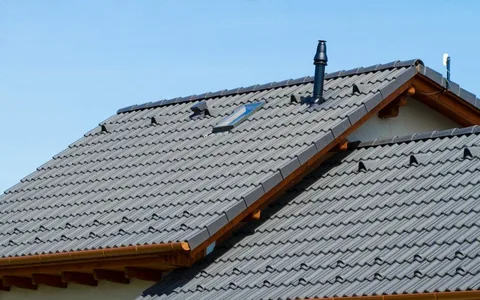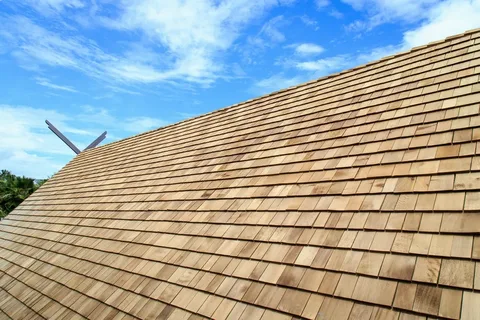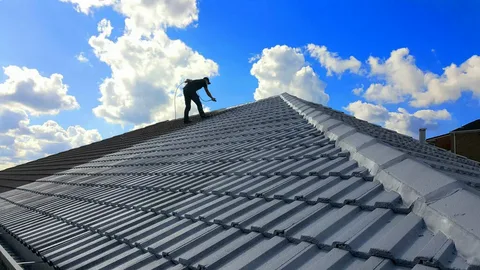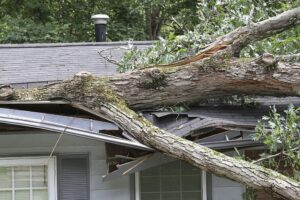Climate change is one of the most significant challenges we face today, affecting nearly every aspect of our daily lives, from the food we eat to the air we breathe. It is no longer a distant concern, but an immediate reality that affects businesses, communities, and industries across the globe. One area where climate change is particularly impacting operations is commercial roofing. As temperatures rise, weather patterns become more erratic, and extreme weather events increase, commercial roofing systems are facing new challenges that require businesses to adapt and plan for the future.

In this blog, we will explore the impact of climate change on commercial roofing needs and how businesses can prepare for these changes. We will discuss the evolving risks to commercial roofs, the types of roofing materials and systems that are best suited for an increasingly volatile climate, and how professional roofing contractors like Atlas Roofing & Restoration are adapting to help businesses safeguard their properties.
Changing Weather Patterns and Their Impact on Commercial Roofs
One of the most noticeable effects of climate change is the increased frequency and intensity of extreme weather events. These events, including heatwaves, heavy rainfall, storms, and even tornadoes, are becoming more common in many parts of the world. For commercial buildings, these extreme conditions are causing significant wear and tear on their roofing systems. Let’s take a closer look at the specific ways in which climate change is affecting commercial roofs:
- Heatwaves and High Temperatures
Rising temperatures can take a toll on roofing materials, particularly those not designed to withstand prolonged exposure to high heat. Asphalt shingles, for example, can become brittle and crack when exposed to intense heat, reducing their lifespan. Commercial flat roofs, often made of materials like EPDM (ethylene propylene diene monomer), TPO (thermoplastic olefin), or modified bitumen, can also suffer from heat-related damage, such as warping, cracking, or bubbling.
Moreover, heat island effects, where urban areas experience significantly higher temperatures than surrounding rural areas, further exacerbate the issue. Roofs in cities may experience higher than expected temperatures, which accelerates the degradation of roofing systems and increases the need for regular maintenance and repairs. - Heavy Rain and Flooding
Intense storms and heavy rainfall have become more frequent in many regions, leading to issues with roof drainage systems. Roofs that were not initially designed to handle large amounts of rain may experience ponding, which can result in leaks and structural damage. Furthermore, areas with frequent heavy rains may see increased moisture accumulation, which can promote mold growth and lead to the rotting of certain roofing materials, especially those with organic components like wood or tar-based systems. - Hailstorms and Wind Damage
As climate change leads to more powerful storms, hail and high winds are becoming a more frequent threat to commercial roofs. Hailstones can damage roofing materials, particularly those made of asphalt, tile, or metal. Cracked or dented roofing systems can lead to leaks and higher repair costs. Additionally, windstorms can tear off sections of roofing material, especially on flat roofs or buildings with older roofing systems. - Freezing Temperatures and Ice Dams
In regions that experience freezing temperatures, there has been an increase in the severity and frequency of winter storms. As temperatures drop and rise throughout the day, the formation of ice dams becomes a significant concern for commercial buildings. Ice dams occur when melting snow on a roof refreezes near the eaves, blocking proper water drainage. The trapped water can seep into the building, causing leaks, insulation damage, and structural deterioration.
Commercial Roofing Adaptations for a Changing Climate
Given the challenges posed by climate change, it’s essential for business owners and property managers to adopt roofing solutions that are more resilient and better suited to cope with extreme weather conditions. Here are some roofing strategies and innovations that are helping commercial properties stay protected in the face of climate change:
- Energy-Efficient Roofing Solutions
As temperatures rise, businesses are seeking more energy-efficient roofing systems that can help reduce cooling costs. Reflective roofing materials, such as cool roofs, have gained popularity because they reflect more sunlight and absorb less heat, which helps to lower building temperatures. These roofs are typically made of reflective coatings, light-colored membranes, or specially designed shingles that can reflect solar radiation.
Cool roofing not only helps mitigate the heat island effect but also reduces the strain on air conditioning systems, lowering energy costs and improving the overall energy efficiency of commercial buildings. - Sustainable Roofing Materials
Sustainability has become a key concern in the commercial roofing industry. Many businesses are opting for roofing materials that are more environmentally friendly and can withstand changing climate conditions. For example, green roofs, which are covered with vegetation, can help manage stormwater, provide insulation, and reduce the urban heat island effect. Similarly, recycled materials, such as recycled rubber or plastic shingles, are becoming popular choices due to their durability and eco-friendly nature.
Solar panels are also an increasingly common addition to commercial roofing systems. Solar roofing integrates photovoltaic panels into the roof, providing a renewable energy source for the building. This innovation allows businesses to reduce their carbon footprint and rely less on non-renewable energy. - Roofing Systems Designed for Extreme Weather
As commercial roofs face more extreme weather events, it’s important to choose materials that can handle high winds, heavy rains, and hail. For example, standing seam metal roofs are particularly well-suited for areas with high winds and hail because they are durable, resistant to impact, and have a sleek design that reduces wind resistance. Similarly, modified bitumen roofs offer excellent waterproofing and can withstand extreme weather conditions like heavy rain and snow.
Additionally, roofs designed with better drainage systems, such as tapered roofing systems that direct water away from the roof, can help prevent water pooling and ice dam formation. Installing proper gutters, downspouts, and drainage channels is also essential for preventing water damage during heavy rains or snowmelts. - Roof Maintenance and Inspection
With climate change leading to more unpredictable weather, regular roof inspections and maintenance have become even more critical. Business owners should schedule inspections at least twice a year—once before the winter season and once before the summer season—to ensure that their roofing systems are in good condition and capable of handling the expected weather.
During inspections, roofing professionals should check for signs of wear and tear, such as cracks, punctures, or lifted seams. They should also examine drainage systems for blockages and ensure that insulation is intact to prevent heat loss or moisture buildup.
The Role of Professional Roofing Contractors
As commercial roofing needs evolve in response to climate change, businesses must partner with experienced and reliable roofing contractors to ensure their buildings remain safe and protected. Professional roofing contractors, like Atlas Roofing & Restoration, are trained to assess the impact of extreme weather events on roofing systems and recommend the best materials and solutions to ensure durability and longevity.

Atlas Roofing & Restoration specializes in installing and maintaining roofing systems that are designed to withstand the challenges posed by climate change. From providing energy-efficient and sustainable roofing options to offering expert repair and restoration services, Atlas Roofing & Restoration helps businesses stay ahead of the curve and safeguard their investments.
Conclusion
The impact of climate change on commercial roofing is undeniable, with businesses facing new challenges that require updated strategies and materials. From heatwaves and heavy rain to extreme winds and ice dams, climate change is increasing the risk of damage to commercial roofs. However, with the right roofing solutions, including energy-efficient systems, sustainable materials, and regular maintenance, businesses can protect their buildings and reduce long-term costs.
As climate change continues to alter weather patterns, partnering with a reliable and experienced roofing contractor like Atlas Roofing & Restoration is essential. With their expertise in commercial roofing systems and a commitment to quality, Atlas Roofing & Restoration ensures that businesses have the protection they need to thrive in an increasingly unpredictable climate.
If you need help adapting your commercial roof to the challenges posed by climate change, reach out to Atlas Roofing & Restoration today. We are here to help with everything from roofing inspections to full installations and repairs, ensuring that your property is always ready for whatever Mother Nature has in store.




